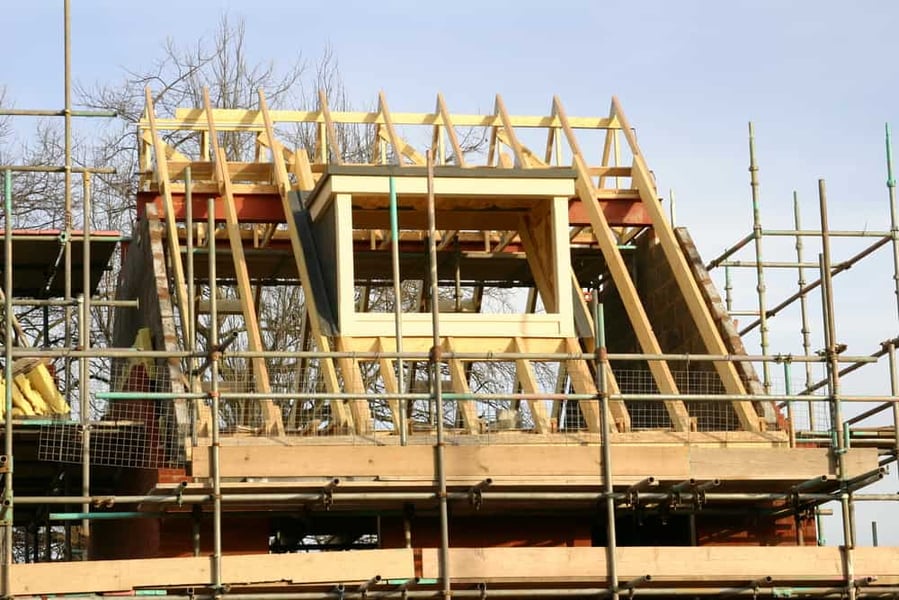A report published by the firm looked at the existing pipeline of sites for housing development, compared with that needed to meet the government’s target of 300,000 net additional homes per annum across England.

Planning and development consultancy Lichfields has warned that the government needs to take urgent action to significantly increase the number of housing developments being granted planning permission.
A report published by the firm looked at the existing pipeline of sites for housing development, compared with that needed to meet the government’s target of 300,000 net additional homes per annum across England.
It dismissed the Local Government Association’s (LGA) recent claims that the level of unimplemented consents at 1.1 million highlights that developers are ‘land banking’.
Instead, Lichfields said this shows that due to a variety of factors such as acquisition of the land, discharge of planning conditions, re-planning to reflect demand and lapse rates, the number of consents required is in fact a minimum of 1.7 million.
The research was commissioned jointly by the Land Promoters and Developers Federation (LPDF) and the Home Builders Federation (HBF).
It outlined that the Ministry of Housing, Communities and Local Government (MHCLG) has recorded the annual rate of permissions at 300,000 to 400,000 in recent years; this has generated the suggestion that there are sites with planning permissions where landowners and developers are deliberately not bringing them forward.
However, according to the research, each year the number of permissions granted includes homes on sites that would not be built out in one or two years, as some sites await funding for infrastructure.
Meanwhile, some permissions will be replacement permissions for approvals granted in previous years to reflect technical changes, redesign, alterations in housing mix or design detail.
Therefore, successive years of units with permission will incorporate significant double counting.
The report sought to understand how the number of homes with planning permission relates to housing need, planning permissions and completions at a regional and housing market level.
To deliver 300,000 homes a year, 1.5 million homes need to be built over a five-year period.
In accordance with the NPPF requirement for local authorities to maintain a rolling five-year housing land supply, the number of homes with planning permission at any one time will need to be aligned with this objective, which means figures in excess of 1 million should be expected.
In reality, Lichfields said the number of homes with planning permission will need to exceed the size of the pipeline, because some permissions will be delayed, re-planned or lapse, and some will deliver homes beyond a five-year horizon.
Paul Brocklehurst, chairman of the LPDF, said: “This research highlights what we in the industry have realised for some time now, which is that the level of planning consents is not sufficient, especially in certain areas of England, to meet the demand for new homes.
“The coarse analysis undertaken by the LGA is shown to be overly simplistic and ignorant of the practicalities of the implementation of planning consents granted.
“Post pandemic the demand for new homes has been exceptionally strong and as a consequence action is required now to improve the flow of planning permissions in many parts of the country to ensure that the housing crisis does not deepen further.
“At a time when the government is proposing fundamental reform of the planning system in the medium to long term we need to ensure that the existing system can operate more effectively now.
“As each day passes those without a home to call their own find it harder and harder to get into the housing market, heightening the generational divide and harming our economy.
“The LPDF will be suggesting a number of ‘quick fixes’ to MHCLG to aid delivery in the short term, though it is clear to our members that something needs to be done immediately about the human resourcing at local planning authorities and the Planning Inspectorate in order to free the thousands of ‘trapped’ new homes through delays to determination, agreement of s106 agreements and planning appeals.”
Andrew Whitaker, planning director at the HBF, added: “The report clearly demonstrates that we are not currently granting anywhere near enough planning permissions to meet the government's housing target.
“It also shows that for such a key government objective, the way housing permissions are monitored is wholly unsatisfactory and does not provide a basis to make reasoned policy decisions.
“The contrast between this research and the recent statements by the LGA that there are enough extant planning permissions to meet the government's housing target of 300,000 dwellings per year clearly demonstrates a need for more robust data monitoring.
“Local planning authorities should be under an obligation to prepare more transparent data that reflects what is actually happening and avoids double counting of replanned schemes and lapsed consents.
“The results of the housing delivery test published by the government in January showed that, far from being complacent, local authorities should work more closely with developers to understand the detail of their housing pipeline of planning permissions.
“Without this robust assessment in place we will continue to fail to deliver the houses the country so desperately needs.”



